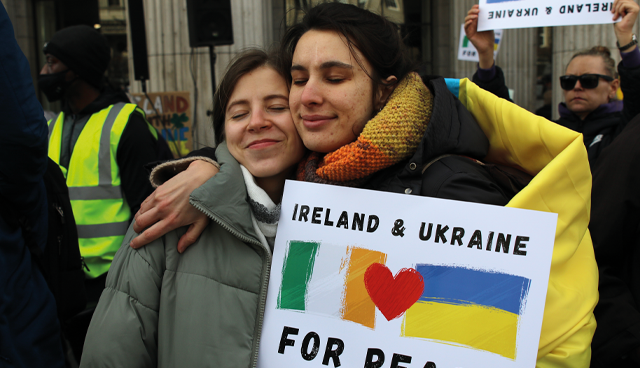
Standards for approved housing bodies
4th July 2022
Peter McVerry Trust focuses on tackling dereliction and vacant properties
4th July 2022Ukrainian emergency poses ‘supply chain crisis’ for housing

Amid concerns around increased pressure on Ireland’s housing waiting list, Minister for Housing Darragh O’Brien TD has said that the Department of Housing, Local Government and Heritage (DHLGH) aims to fully implement Housing for All, while government seeks to accommodate the needs of Ukrainian refugees.
In April 2022, the Minister admitted that the Ukrainian crisis posed a simultaneous challenge of unprecedented demographic change and a supply chain crisis for housing.
O’Brien’s comments came just days after Taoiseach Micheál Martin TD had dismissed calls to put a ceiling on the number of Ukrainian refugees arriving in Ireland, given the supply and demand imbalance of Ireland’s housing crisis.
The latest CSO statistics show 35,670 arrivals from Ukraine in Ireland by week ending 05 June 2022. In March, Minister for Agriculture Charlie McConalogue TD said that it was possible that Ireland could receive up to 200,000 refugees.
In June then, it was reported that the Government had established a refusals protocol as it seeks to accommodate around 1,000 new refugees every week. Under the new rules, refugees will only be able to refuse offered accommodation twice before the Government deems itself to have fulfilled requirements under the EU’s Temporary Protection Directive.
At present, around 62,000 households are deemed to have an unmet social housing need, however, recent estimates by the Parliamentary Budget Office point to the exclusion of those in receipt of Housing Assistance Payment (HAP) from the official waiting list, meaning that the number of households eligible for but not yet in receipt of social housing is closer to 122,000.
The context of the challenge posed in relation to Ireland’s housing provision can be seen in early figures released by the European Commission. In April, of the 25,173 Ukrainian refugees, only 16,788 had been provided with accommodation by the State. At the time, almost 25,000 offers of private accommodation had been made via the Irish Red Cross portal, however only one-quarter of these were deemed appropriate following assessment.
Each local authority has been asked to establish temporary accommodation; however, this is recognised as unsustainable in the medium- to long-term. Additionally, it is expected that colleges and universities will make available accommodation facilities vacated by students in the summer months. Yet, this has the potential to further constrain rental market capacity later in 2022.
O’Brien says that in responding to the Ukrainian situation, any newly delivered accommodation will be in addition to the Housing for All targets for 2022. “Any suitable and additional permanent accommodation returned to general social and affordable housing if and when the Ukrainian crisis is resolved and special accommodation needs end,” he notes.
Outlining some of the specific actions in relation to housing provision for refugees, the Minister points to the identification of 500 vacant buildings, 89 of which were deemed capable of almost immediate occupation. The Minister has requested the establishment of an Emergency Vacant Housing Unit to lead refurbishment of buildings.
Additionally, the OPW is to lead the delivery of modular/volumetric construction on available and suitable State land.
Beyond the Ukrainian response, the Department is expected to remove the local authority acquisition cap and restore emergency powers to local authorities. Additionally, a new Voids programme for 2022 is expected to hasten the turnaround of vacant social housing stock in efforts to meet waiting lists demand. In May, the Minister reaffirmed to the Irish Times that the accelerated programme was not a Ukraine response but was “for those on the social housing list”.
The Minister is exploring the potential of introducing restrictions on short-term letting in rent pressures zones (RPZs).






